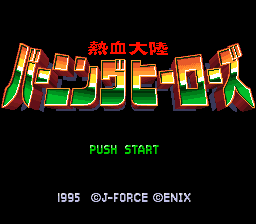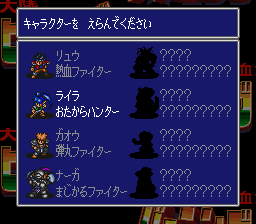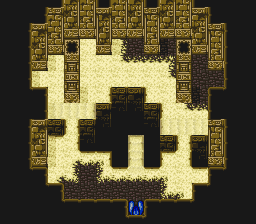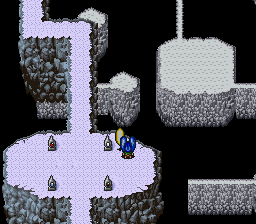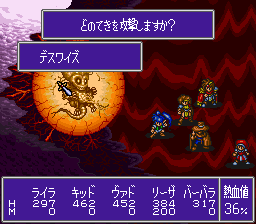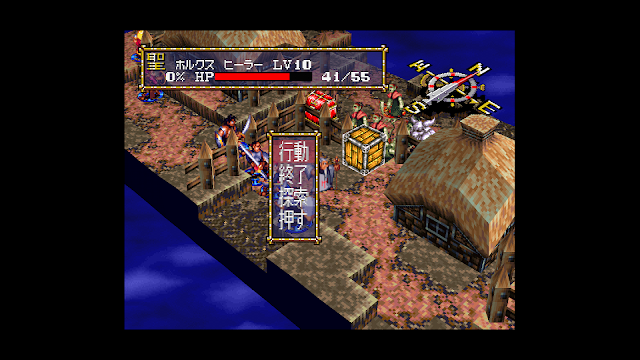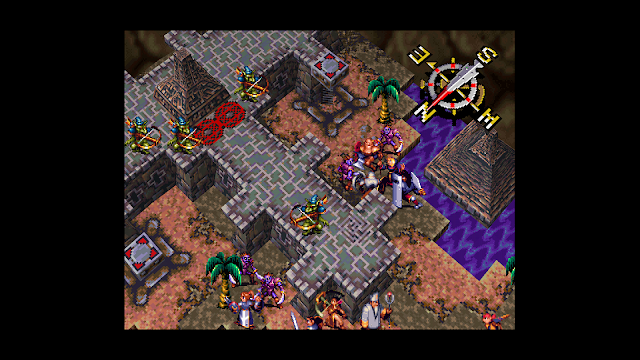Vandal Hearts (ヴァンダルハーツ〜失われた古代文明〜)
Released 10/25/1996, by Konami
This seems to be Konami’s first SRPG. It makes use of the Playstation hardware capabilities to have a rotating 3D isometric map. This is not the first 3D game I’ve played, but it’s much more competent and worthwhile than Sengoku Cyber. Vandal Hearts allows for full rotation of the camera and angle change. Other than that, everything in this game we’ve seen before.
There are narrated sequences between chapters, otherwise there is no voicing. This is something that always interests me about the Playstation, although there are fully (or mostly) voiced acted games as well (we’ll be seeing one example very soon).
I seem to have abandoned my data matrix because I stopped doing wrap-up posts. But I think it’s a good way to overview the system so I will resurrect it.
- Turn type: Player/enemy phase
- Maps: The maps have terrain bonuses, as well as height. There are chests, hidden items, and switches as well as poison bogs and occasional other things.
- Character Customization: Characters can promote at level 10 and 20. Some classes have the option to take one of two paths at level 10.
- Character Development: Standard XP/level system.
- Party Size: I don’t know what the max size is, but you always use all your guys.
- Equipment: One weapon, one armor, one shield, and then 2 carry items.
- Game Flow: 6 chapters with 5-7 battles each, all done in order. No random encounters. There are also some optional “trial” maps you can unlock throughout the game.
- Saving: On the world map, and one in-battle save.
- Death: Main character = game over, other characters will come back after the battle (you have a small money penalty)
Here’s the backstory for the game from Wikipedia:
Thousands of years ago, the holy man known to history as Toroah the Messiah traveled far and wide across the continent of Sostegaria, spreading his teachings throughout the land. After his death, his descendants and heirs assumed absolute political power over the region, forming the basis of the Holy Ashah Dynasty and ruling through a combination of religious doctrine and military power for millennia. The kings and queens of the Holy Ashah Dynasty, however, did not always rule wisely or justly, and, as time passed, the citizenry began to resent the power of their leaders.
Fifteen years ago, this growing discontent found its ultimate expression in the person of Arris the Sage, who united the desperate and resentful anti-royal factions throughout Sostegaria and shaped them into a powerful guerrilla army. Under the cunning leadership of Arris, this Liberation Army managed to outwit and outmaneuver the Royal Army, and finally smashed through to the palace of the Ashah Dynasty itself, and burnt it to the ground.
With the monarchy dissolved, the rebels establish a ruling council founded on the principles of democracy and popular sovereignty. From the ashes of the Holy Ashah Empire emerges the Republic of Ishtaria. The leaders of the revolution naturally assumed leadership positions within the new republic: all, that is, except for Arris himself, who suddenly disappeared and has not been seen of, nor heard of, ever since.
Today, the fledgling republic is in increasingly dire straits: the autocratic Minister of Defense, Hel Spites, and his elite anti-terrorism squad, the Crimson Guard, are using ever-increasing force to stamp out the last vestiges of resistance to Ishtarian rule, while they allow outlaws to roam the countryside and pirates to sail the seas.
The characters are generally much older than usual (Ash is 25 and I think the youngest party member is 17). Overall the story is decent so far.
(Sorry the screenshots suck for this post except the title one; I changed the duckstation settings after this to take better ones.)
Chapter 1
The story for this chapter basically shows Hel Spites beginning to take control over the republic while Ash and his friends serve it through a guards regiment (while opposing the Crimson Guard, though not to the point of attacking them).
The first battles are pretty easy although I had to restart the first one until I learned the system basics. You can only counterattack, and units get support bonuses if their allies are surrounding the character. This means that if enemies gang up on one unit, that unit will tend to get severely hurt or die. This game has the “main character dies = game over” system; I really don’t like this in any games. It’s not as bad here as I’ve seen it, but it still tends to create this fear of actually using the main character.
But basically, the general tactic is to keep back and stay together unless you have to go forward. The system has unit compatibility; there’s a triangle between the fighters but then the Armors are good against all of them, and magic is good against armor.
There are hidden treasures on many of the maps. They are marked by things like craters, cracks, or strange patterns in the ground.
The second battle introduces the first switch, which you “search” to activate.
Battle 4 has a burning bridge so you do have to move forward.
Battle 5 is just one enemy plus a bunch of arms; the arms paralyze but if you just move towards the main enemy it’s not too bad.
Finally Battle 6 is a ship battle. The enemies cluster on the gangplanks and can be finished off with bows and spells.
At this point I had some people hitting level 10. These are the paths I took everyone on:
- Ash – Hero (he has no choice)
- Jose – Hawk Knight/Sky Lord
- Reen, Amon, Genius – Sniper/Ace Gunner
- Keith, Rado – Armor/Heavy Armor
- Dolmen – Knight/Sword Master
- Elena – Wizard/Spellmaster
- Horcus – Bishop/Messiah
- Samdera, Saria – Monk/Godhand
I did this without reading about the pluses and minuses of various classes. I probably should have made Samdera a second Wizard since their damage spells are quite good. It seems like most people recommend Genius being the Hawk Knight; you need one to get Ash’s hidden class. Personally I have found the Hawk Knight pretty useful so far in contrast to what everyone says. (BTW all the names are different in the translation. It looks like Keith->Clint, Jose->Diego, Elena->Eleni, Horcus->Huxley, Dolmen->Dolan, Rado->Grog, Saria->Sara, Samdera->Zohar, Genius->Darius, Reen-Kira.)
Near the end of the chapter we begin getting the Trial Keys. Each one can be taken to the promotion area and then there’s an optional trial map. In each map you have to beat all the enemies but also get a chest before you do that, which has a prism in it. If you get all the prisms, you unlock Ash’s secret class.
The trial maps all have some sort of gimmicky setup; in this case you just have to climb this huge mountain. I thought I would lose but I managed to win with 2 guys left alive and no MP.
Chapter 2
Here we go to an island and find the intrigue surrounding a certain gemstone. The first battle you have to destroy statues without destroying all the enemies (who are villagers changed into monsters). This is only a challenge because you can’t choose not to counterattack. This rubs me the wrong way; a battle that bases its strategy on a fundamentally flawed system element that makes no logical sense in the story. It does have strategy because you have to make sure you are placing your units in the right place. I ended up killing all the villagers but one.
The fourth battle in the chapter is annoying; you have to use these elevators that raise and lower to get everyone across a wall, and since the goal is “reach the castle door with everyone” even when you beat the enemies you still have to spend a bunch of time moving everyone.
The sixth battle is vs. a bunch of guard dogs, who have to be beaten within 7 turns and like to run away. Not very hard, but a strange battle.
There’s also another Trial in this chapter which is vs. all archers. It’s not especially hard but archers tend to be able to gang up on a character and it can be hard to judge placement because of the archers’ movement and then attack range.
Chapter 3
The plot takes a strange turn here as most of the characters get sent to another dimension where 3 years pass in a few days — I think this is to allow them to show the change in the world after the takeover by Hel Spites.
In the second battle you have to prevent towers from being destroyed by the enemies; I only had one left at the end but that’s enough.
The next few stages aren’t too bad, then there’s an interesting one where the enemies will start running away when you show yourself, so you have to wait until they reach a good spot and then pick them off before they can run.
Then we switch to a different party of people who are in jail, with some interesting enemies — they can’t be hurt except from behind, and from behind they die in one hit. So it’s all about maneuvering them into the right spot and then killing them.
The trial for the chapter is easy; just one enemy and a bunch of chests, and you have to find the one with the prism.
So that’s half the game down (I’m on chapter 5 so hopefully I will finish up this weekend). Not bad but it does show its age in a few interface issues.
